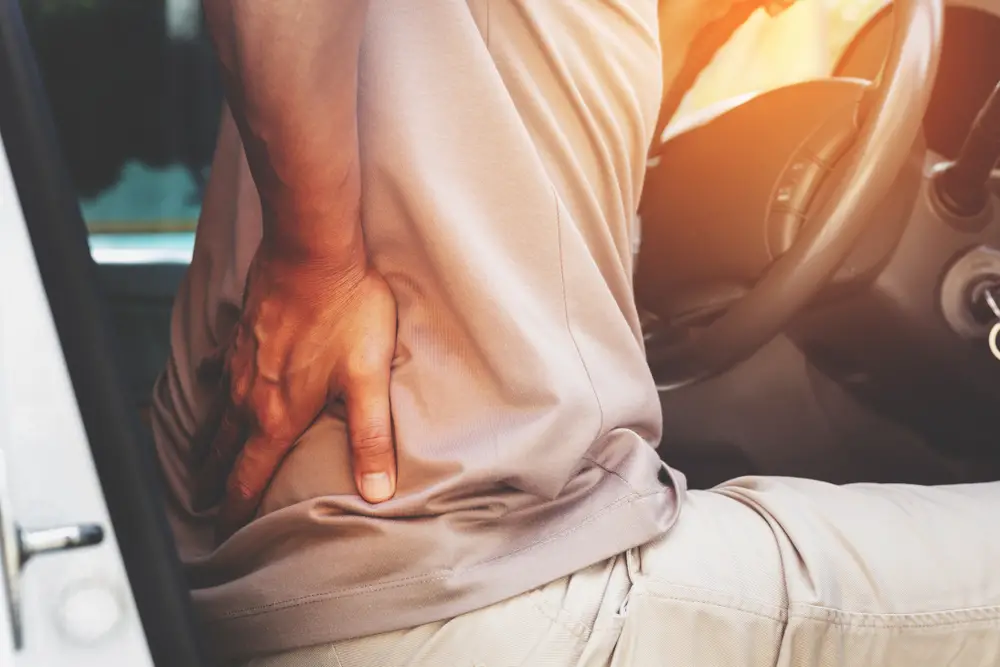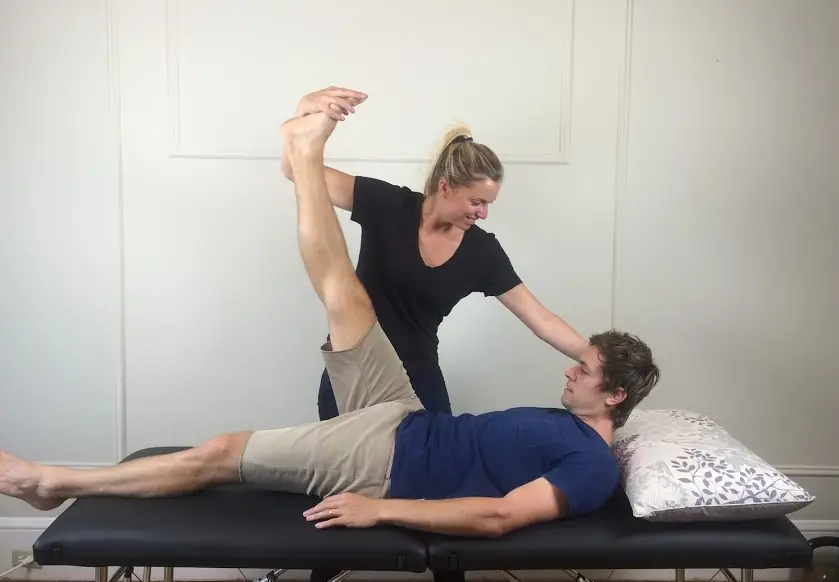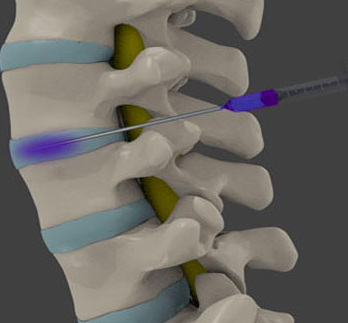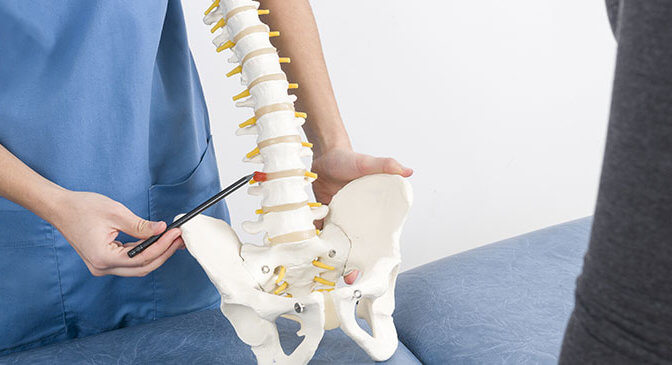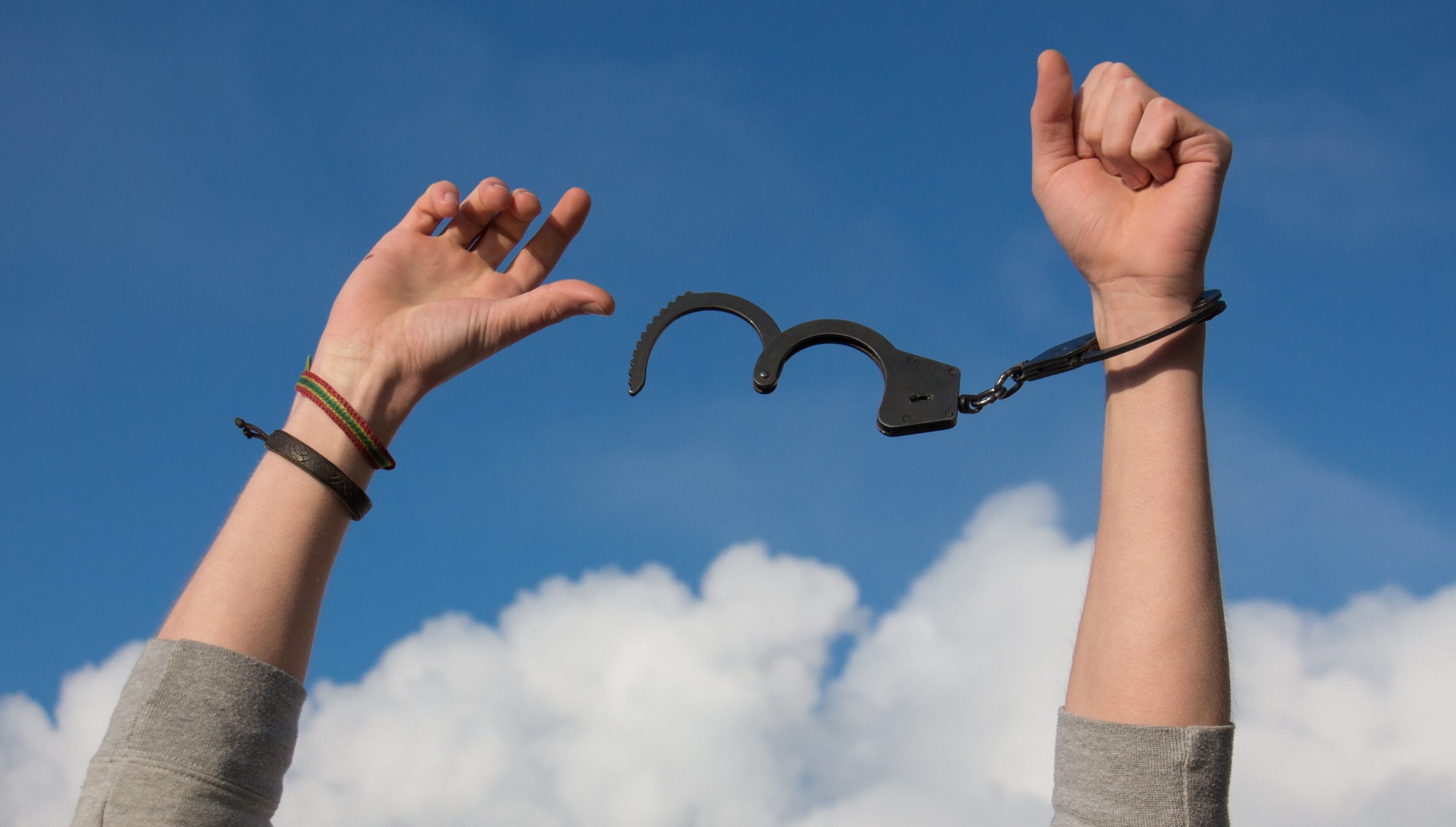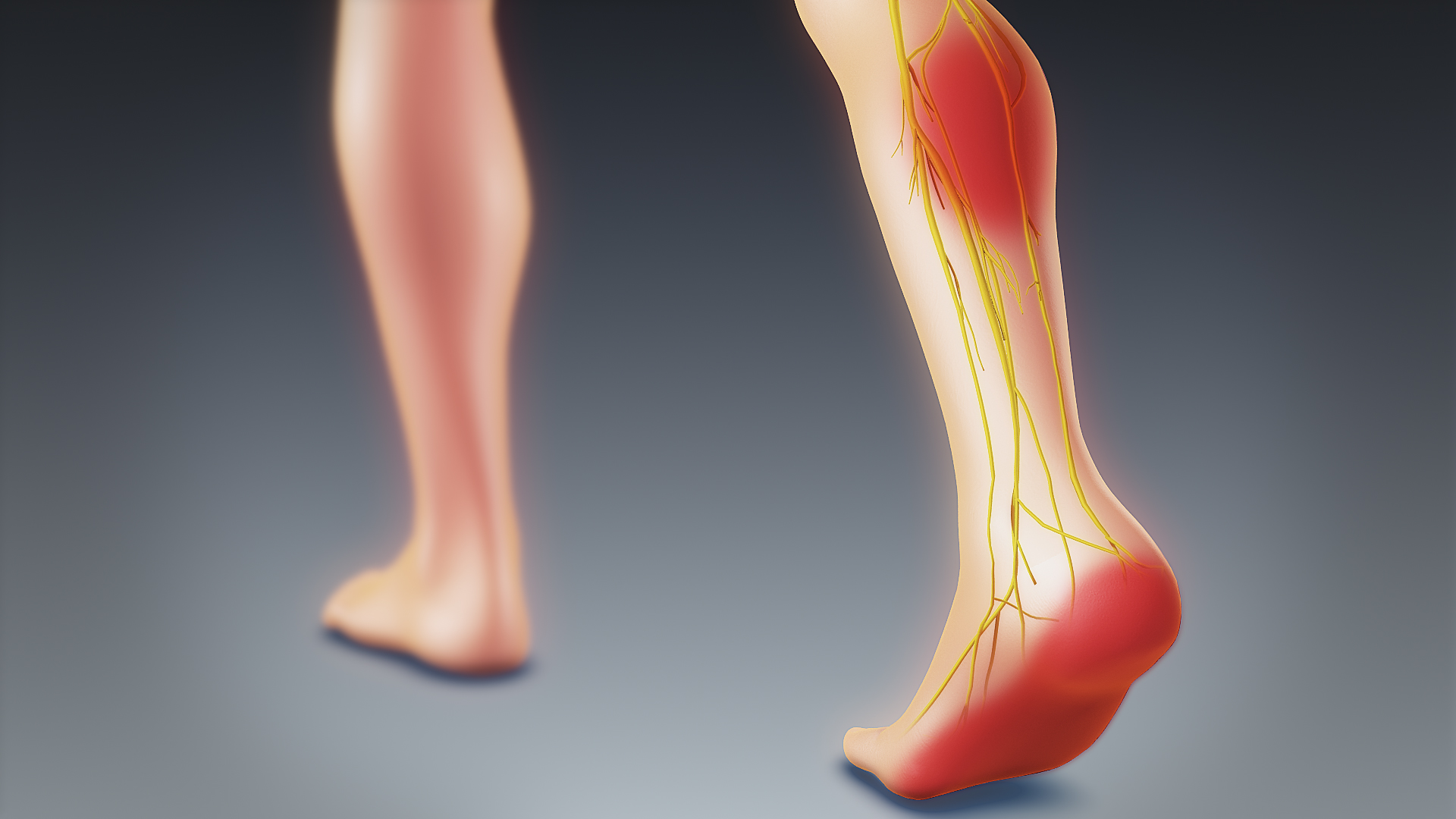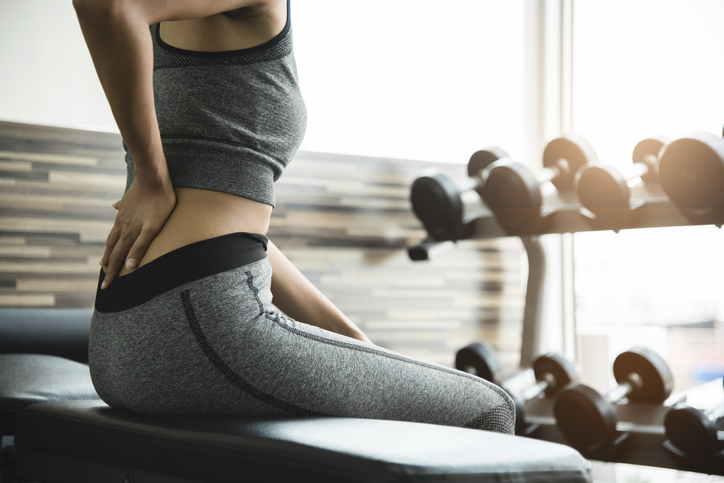Article reviewed and approved by Dr. Ibtissama Boukas, physician specializing in family medicine
Do you plan to travel in the near future? If you suffer from herniated disc, you probably know that certain prolonged positions can make your pain worse. Whether it's back pain or radiating pain (such as sciatica), it is sometimes difficult – if not impossible – to sit still for too long.
Can you travel by plane with a herniated disc? How to relieve your symptoms when sitting is painful? This article offers you 7 solutions allowing you to optimize your next plane trip if you suffer from a herniated disc.
Reminder about herniated disc
First of all, I invite you to familiarize yourself with the diagnosis of herniated disc. The more familiar one is with the potential causes and symptoms, the more one will approach treating this condition in the best way. To learn all about herniated disc and its impact on sports and professional activities, see the following article:
Herniated disc from A to Z: Better understand your diagnosis (symptoms and causes)
Essentially, the discs deform and bulge out of their shells as part of a herniated disc. Since there are several nerve roots around these discs, an inflammatory process and nerve irritation may ensue, causing the symptoms (low back pain, radiation, numbness, tingling, etc.).
Although not always the case, symptoms are often aggravated by prolonged sitting. This is because this posture promotes the migration of the disc backwards, which causes the characteristic symptoms of a herniated disc.
This makes long trips particularly difficult for people with the disease, even more so if the seat is not comfortable or space is limited. Not ideal when you are about to take the plane for a long trip!
Do not panic ! These 7 tips will help you have the most enjoyable trip possible, minimizing the stress on your discs, joints and muscles. Moreover, some of these tips also apply during your car journeys.
To benefit from specific advice on driving in the presence of a herniated disc, see the following article.
Traveling by plane when you have a herniated disc (7 tips)
If your herniated disc has been operated on, it is crucial to obtain the green light from your surgeon before traveling by plane. In fact, depending on the operation performed, there may be certain contraindications that prevent certain positions from being maintained during the recovery period.
For people who have received a diagnosis and who are not candidates for surgery, these tips will improve your quality of life and make getting around easier. Without delay, here are 7 tips to apply for those who wish to fly while suffering from a herniated disc:
1. Contact the airline before ordering your ticket
Call the airline and let them know of your herniated disc diagnosis. Often they will be able to provide you with more information on the ideal flight to book. For example, some flights might be less busy, allowing you to have more than one seat to yourself.
You can also ask them to offer you an aisle seat. This will allow you to get up regularly, and not have to contort yourself in all directions to be able to go to the bathroom.
2. Bring a medical note if needed
This note from your doctor can be presented to the crew before your flight. You can also ask the staff to carry your luggage, and place it in the overhead compartment to avoid further injury.
One of my patients was even upgraded to first class because of his herniated disc!
3. Take your pain medication an hour before your flight
If you are in pain and taking tablets, taking them an hour before departure will allow the medication to take effect at the time of flight.
4. Place support behind your neck and/or lower back
Patients often report that neck pillows improve the quality of their sleep. These pillows are designed specifically to support your head and neck in a natural, neutral position.
For the lower back, a roll or even a few pillows are a good way to avoid slouching and keep the spine right.
5. Move and get up as much as possible
Staying still for prolonged periods often makes back pain worse. There is also a risk of deep vein thrombosis, a condition in which a blood clot develops in a vein deep in the body.
Often, exercises taken from the McKenzie method are effective in the presence of herniated disc. If you want to familiarize yourself with this technique often used in the treatment of back pain, consult next article.
6. Do breathing exercises
Breathe slowly (inhale deeply through your nose, count to five, exhale slowly through your mouth, and repeat 10 times). This exercise will help you relax your muscles and alleviate some of the pain you may be feeling.
To learn all about breathing for back pain relief, see the following article.
7. Stay hydrated!
In an airplane cabin, the humidity drops to around 20%, which can lead to dry eyes, sore throats and dehydration. Drinking plenty of water will keep you hydrated – not to mention that it will force you to get up regularly to go to the bathroom!
Conclusion
Here are 7 tips that I often share with my patients with herniated discs, especially when they are about to take the plane. Although they do not treat the cause of the problem, they do relieve the symptoms and make the trip easier.
If you want advice related to the treatment of herniated disc, see this article where I share 10 natural and surgical solutions to cure this pathology:
Herniated disc treatment: 10 solutions to consider
Bon voyage, and good healing!




